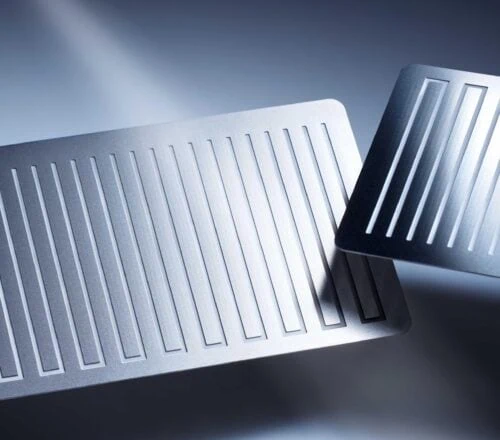Supply Chain: Checklist for Photo Etching
Leave a Comment6 Reasons to Consider Photo Chemical Machining for Precision Metal Parts Production
In the fast-paced world of manufacturing, supply chain professionals must continuously evaluate the most efficient and cost-effective methods for producing precision metal parts. One technique that often goes underappreciated is photo chemical machining (PCM). PCM, also known as photochemical etching, is a subtractive manufacturing process that uses chemical etchants to remove material with high precision. This method offers significant advantages in specific scenarios, making it an ideal choice for certain applications. But when should supply chain professionals consider PCM over other manufacturing techniques such as stamping, laser cutting, or CNC machining? Here are the key factors to evaluate:
Complex Geometries and Fine Features
One of the strongest advantages of PCM is its ability to produce intricate, complex geometries with exceptional accuracy. Unlike traditional machining or stamping, which may struggle with fine details, PCM can create highly detailed patterns, including sharp corners, thin walls, and micro-perforations, all without the risk of mechanical stress or distortion. This makes it particularly useful for applications in electronics, aerospace, medical devices, and filtration components where high precision is required.
Thin Metal Components
PCM is an excellent option when working with thin metal sheets, typically ranging from 0.01mm to 1.5mm in thickness. Traditional methods like stamping or laser cutting may deform thin materials due to excessive force or heat, leading to inconsistencies in the final product. PCM, on the other hand, ensures that the structural integrity of the metal remains intact, producing burr-free and stress-free parts. This is particularly beneficial for industries requiring lightweight but strong components, such as aviation, defense, and microelectronics.
Prototyping and Small to Medium Production Runs
For supply chain professionals dealing with prototyping and small-to-medium batch production, PCM presents a cost-effective solution. Unlike stamping or die-cutting, which require expensive tooling and long lead times, PCM utilizes inexpensive phototools that can be quickly produced or modified. This allows for rapid design iterations and low-cost adjustments, making it an ideal choice for new product development or custom manufacturing applications.
Material Versatility
PCM can be used with a wide range of metals, including stainless steel, copper, brass, aluminum, titanium, and even exotic alloys like Inconel. Unlike some traditional machining methods that may struggle with harder or brittle materials, PCM etches away metal uniformly without inducing mechanical stress. This versatility makes it an attractive option for industries requiring corrosion-resistant, high-strength, or temperature-resistant materials.
Elimination of Mechanical Stress and Heat-Affected Zones
Mechanical processes such as stamping and laser cutting can introduce stress, warping, and heat-affected zones (HAZ) in metal components, potentially altering their mechanical properties. PCM eliminates these issues because it is a chemical process rather than a mechanical or thermal one. This results in components with superior dimensional stability and integrity, particularly important for precision applications in the medical, semiconductor, and aerospace industries.
Cost-Effectiveness in the Right Context
While PCM is not always the most economical choice for very high-volume production, it offers significant cost advantages in cases where expensive tooling or extensive secondary operations would otherwise be needed. Supply chain professionals should consider PCM when:
Tooling costs for stamping or CNC machining are prohibitively high.
Design changes are frequent and require a flexible manufacturing process.
The component’s complexity makes other methods inefficient or costly.
Material waste must be minimized, as PCM generates very little scrap.
Final Thoughts
Photo chemical machining is a valuable tool for supply chain professionals managing the production of precision metal components. Its ability to create intricate geometries, work with a variety of materials, and eliminate mechanical stress makes it an attractive alternative to conventional machining and stamping methods. While it may not be suitable for all manufacturing scenarios, PCM is an excellent choice for prototyping, small-to-medium production runs, and applications requiring ultra-precise, burr-free, and stress-free components. By understanding the strengths of PCM, supply chain professionals can make more informed decisions, optimizing cost, quality, and efficiency in their manufacturing operations.


